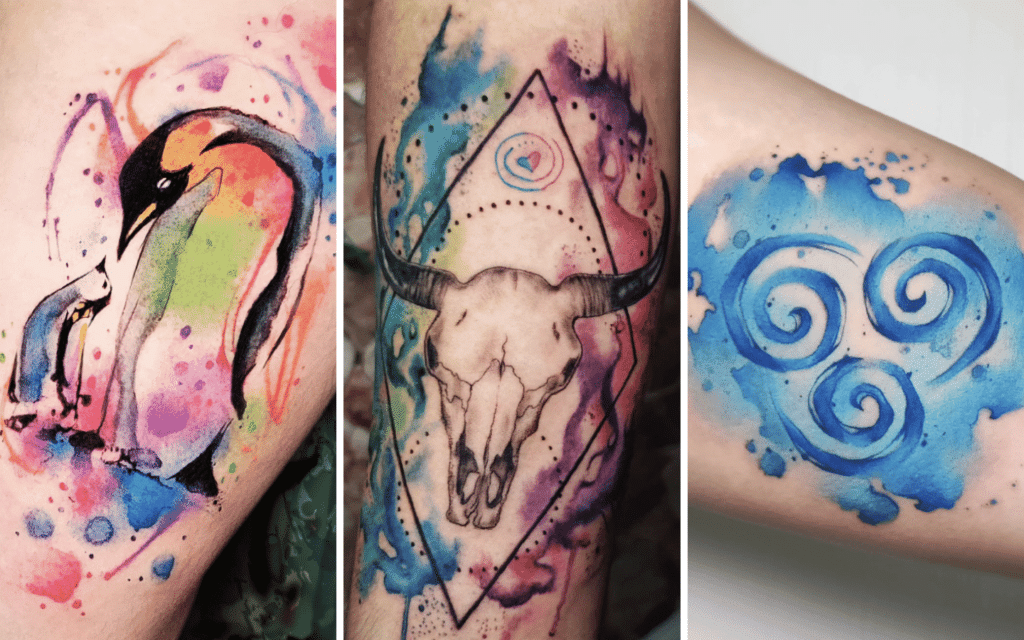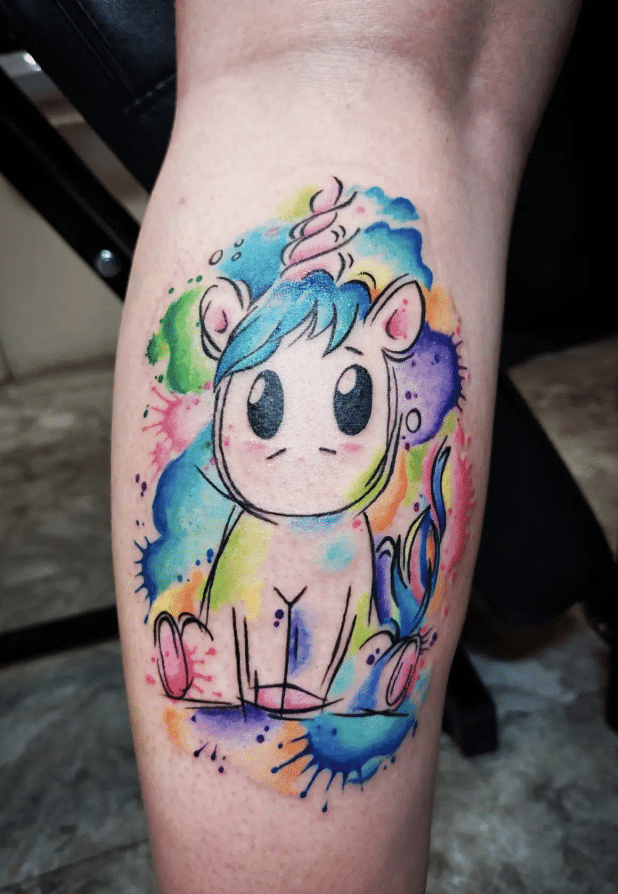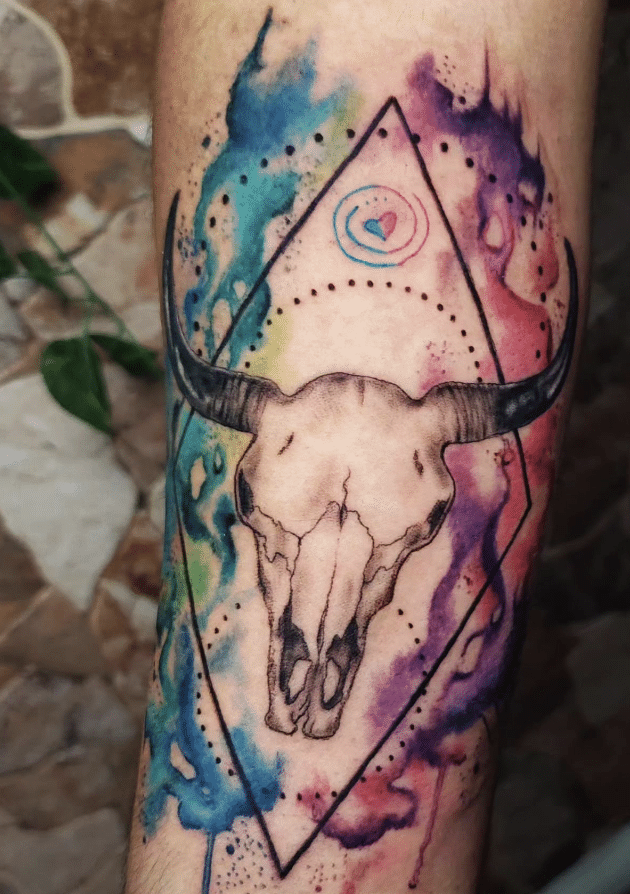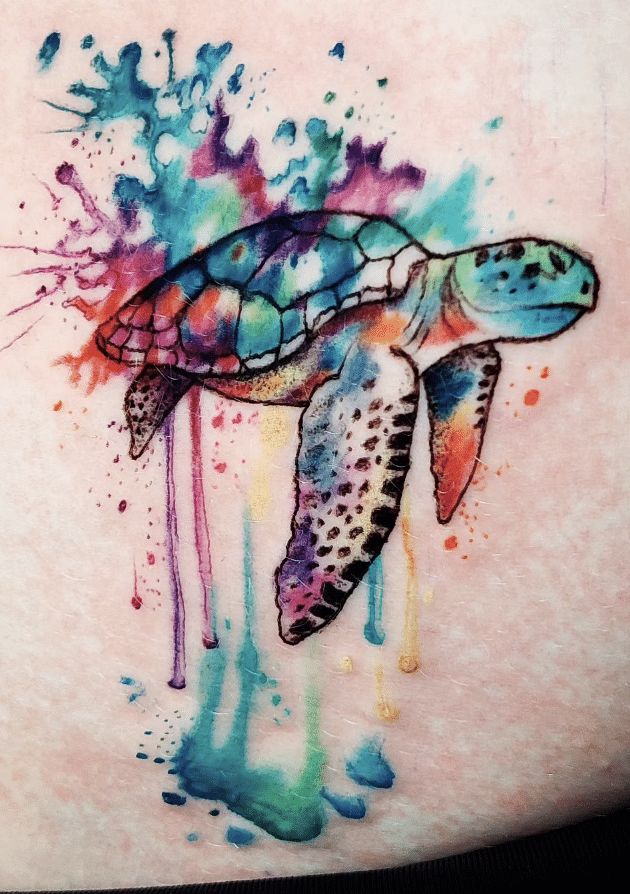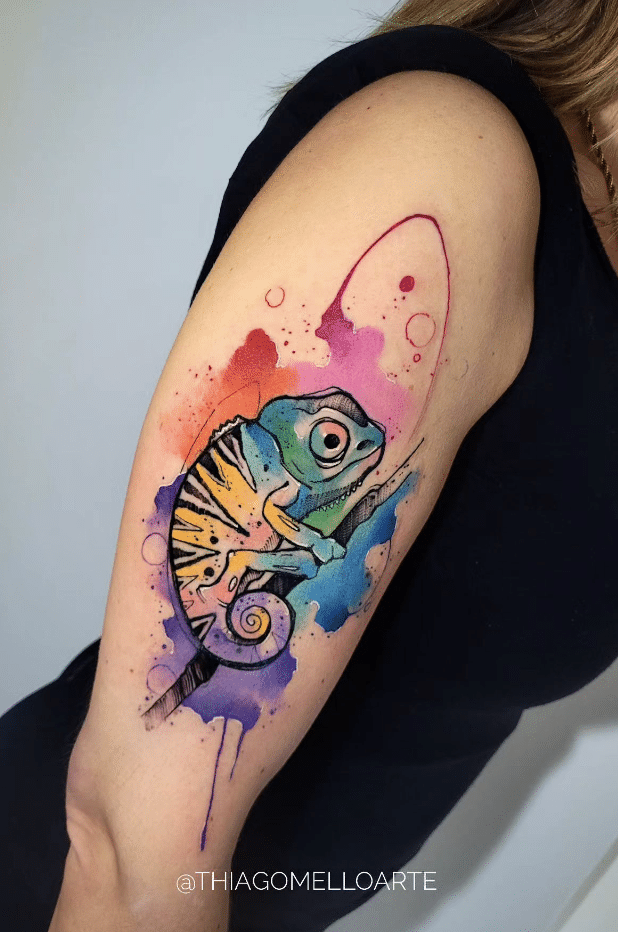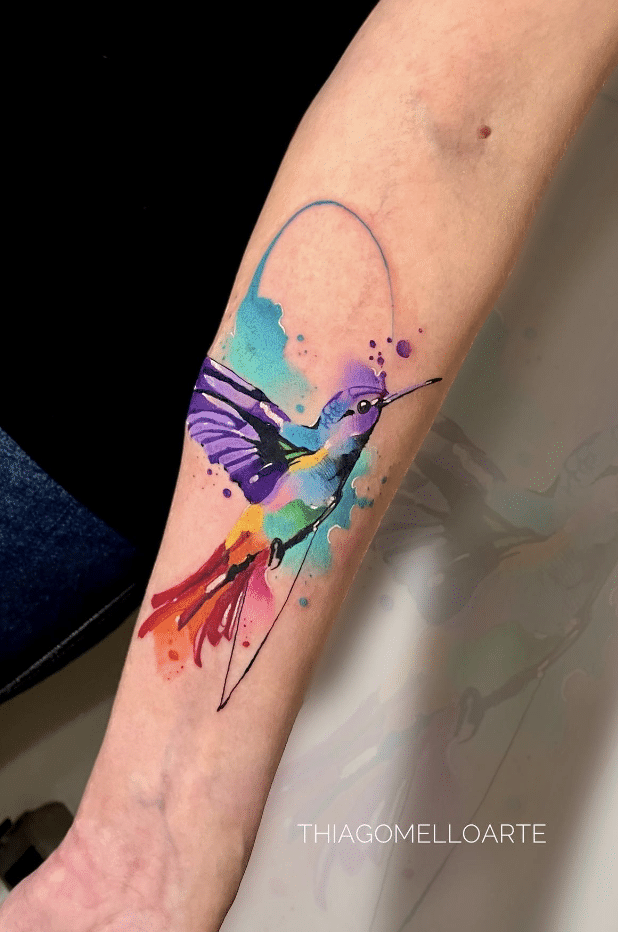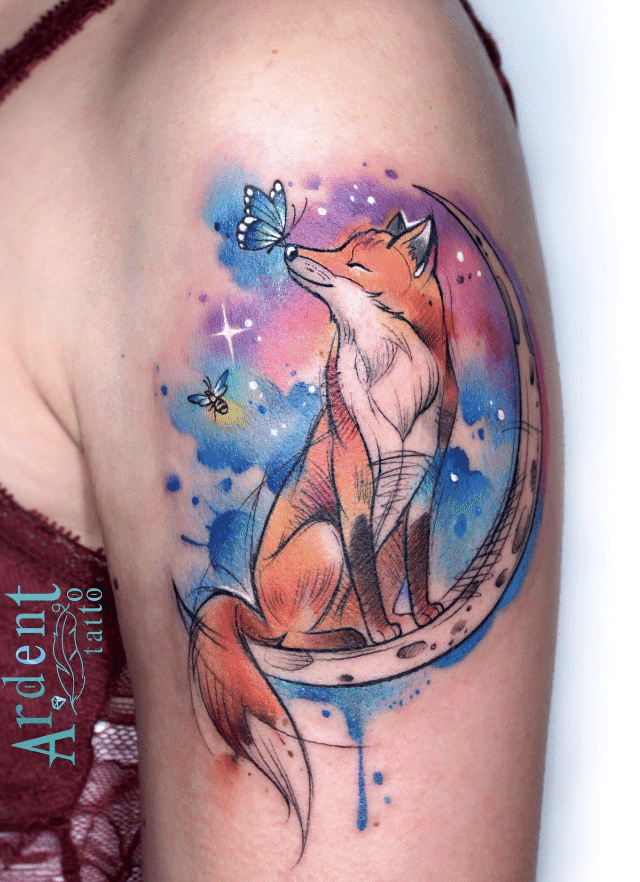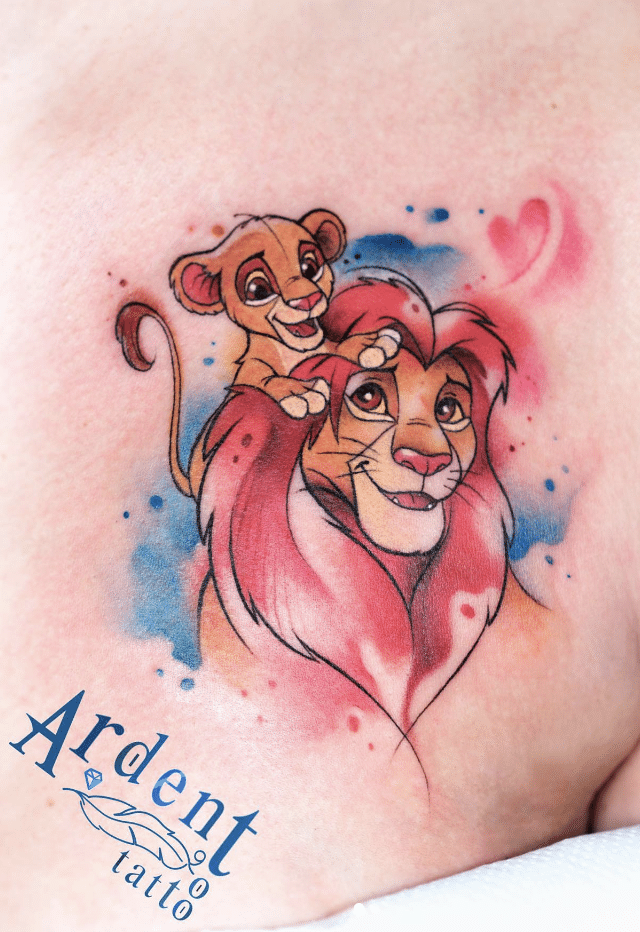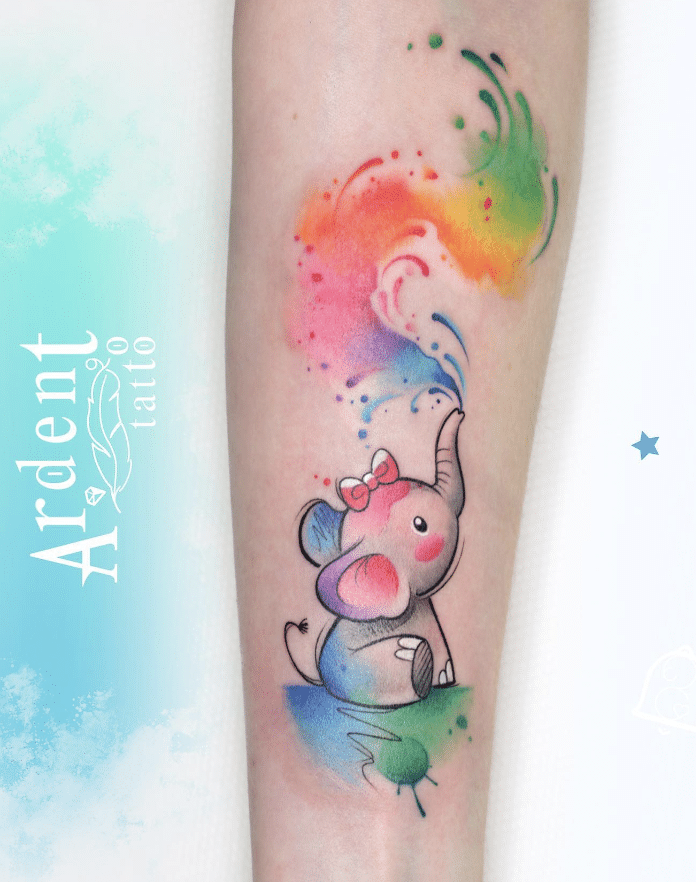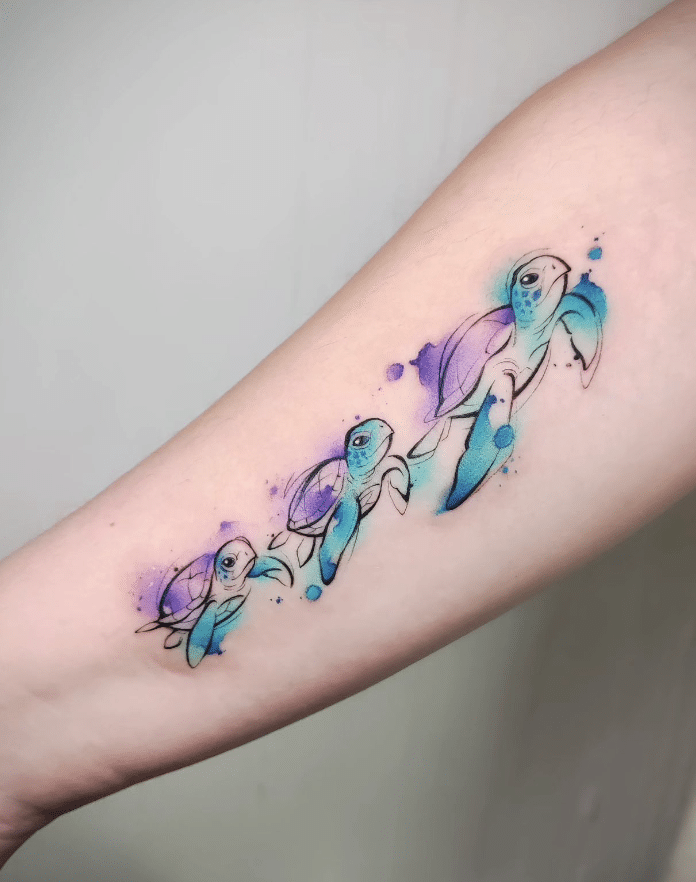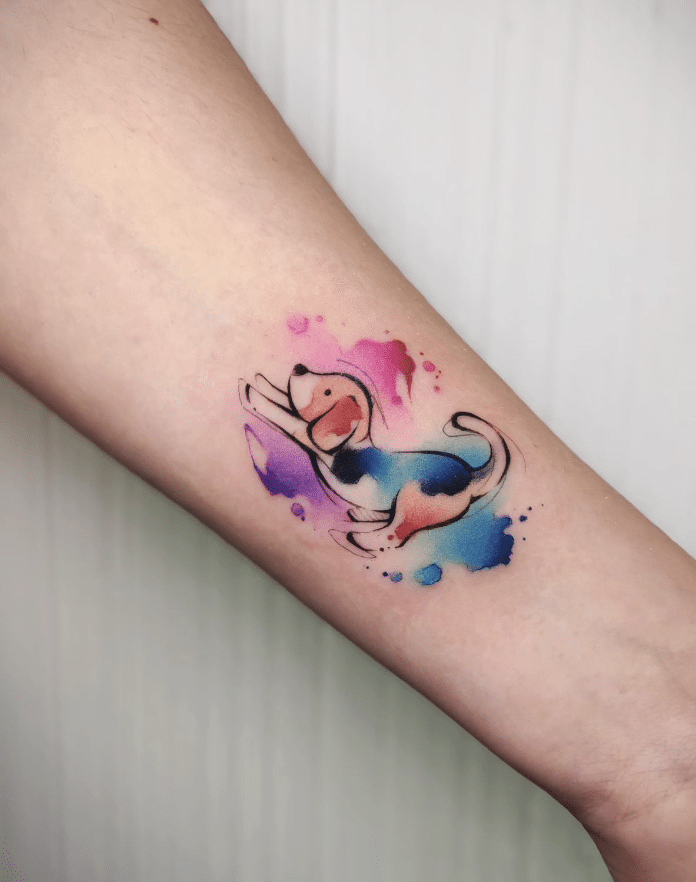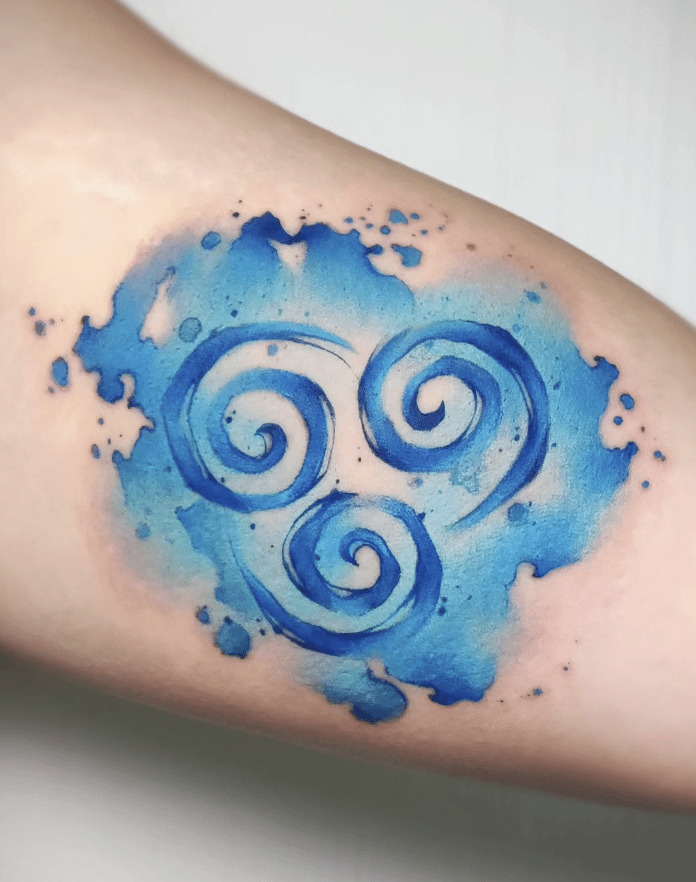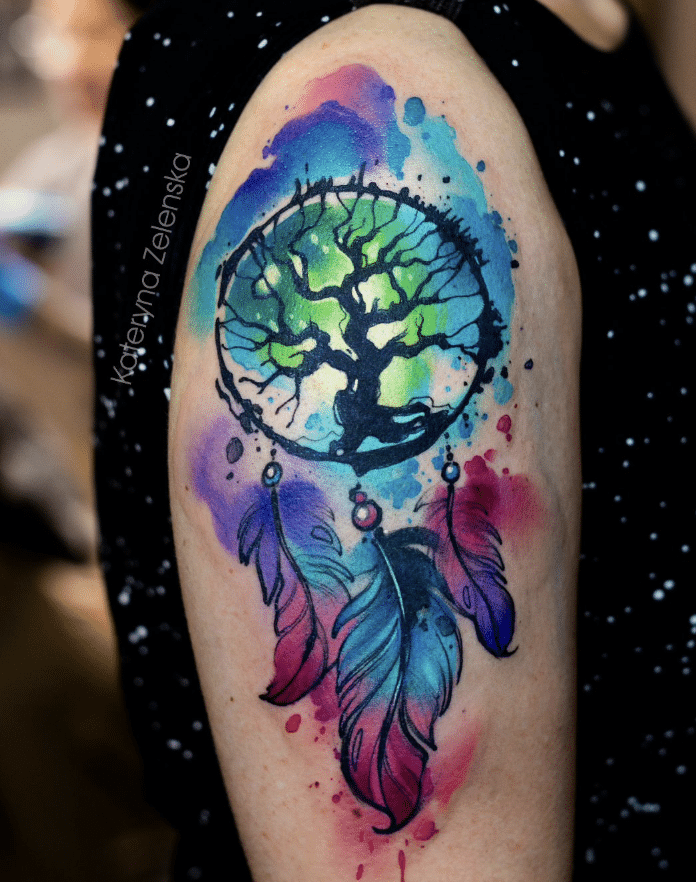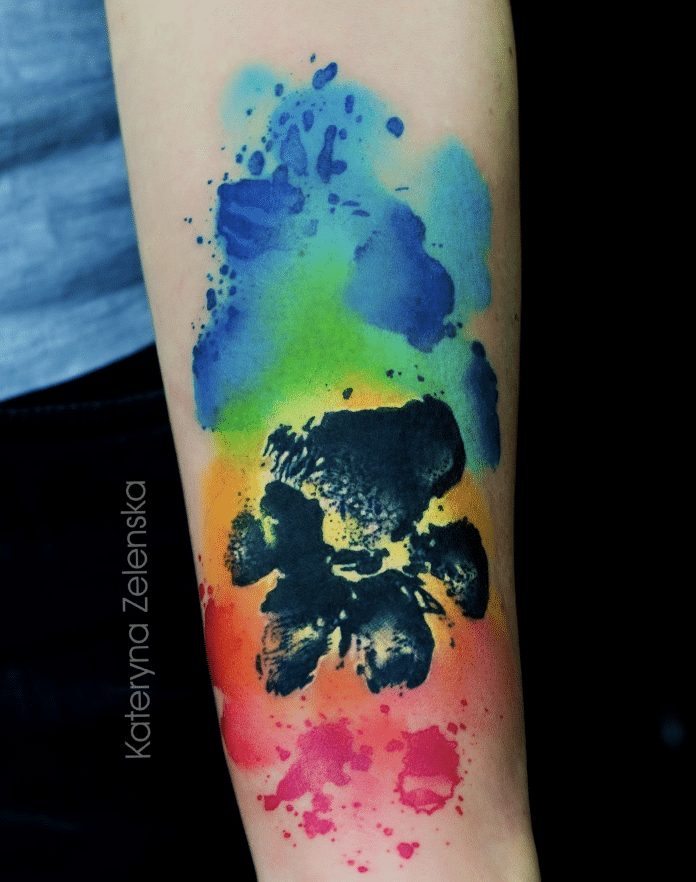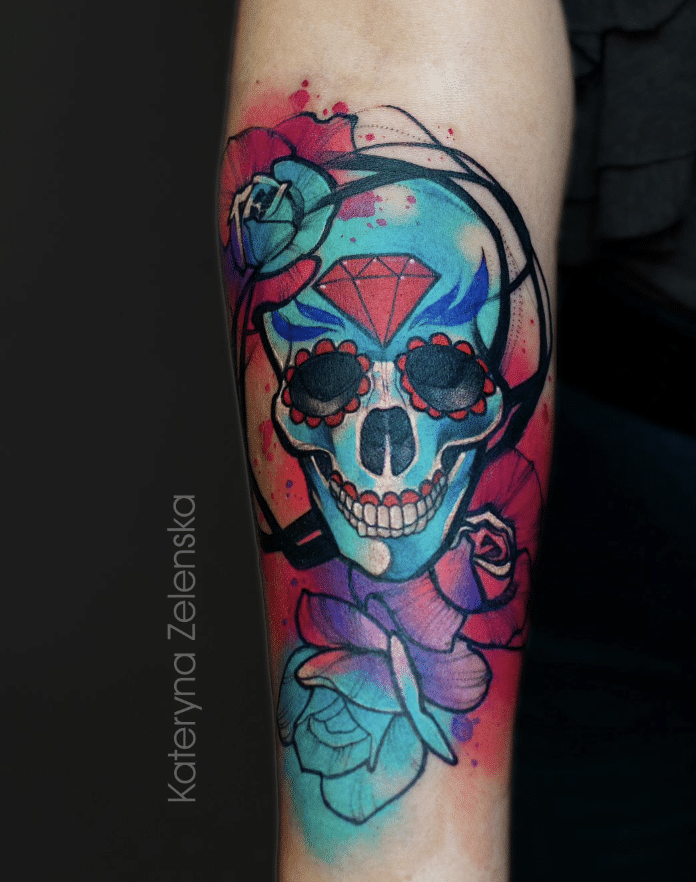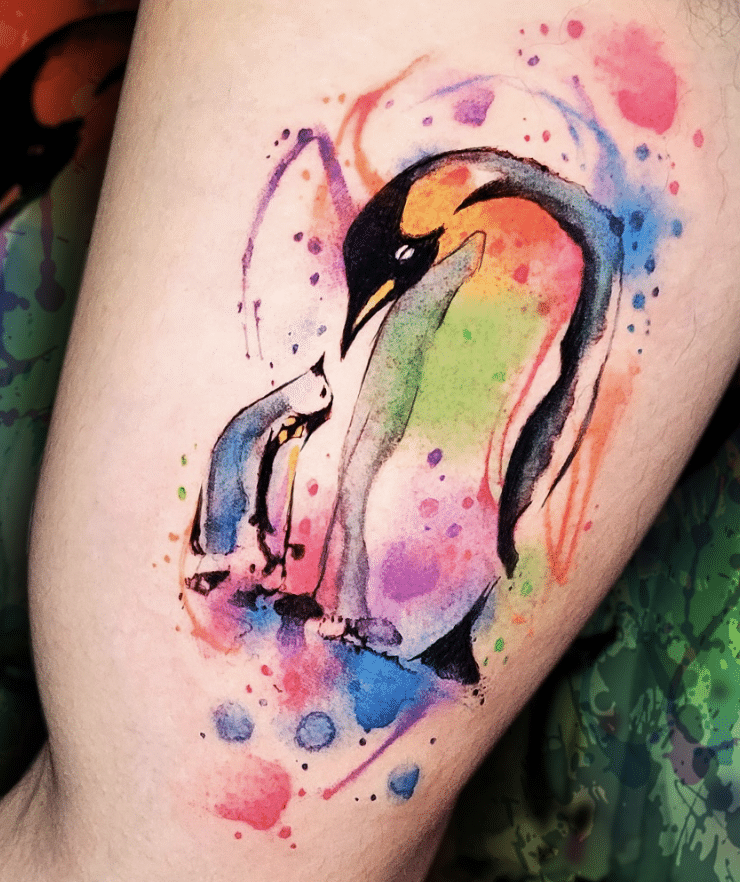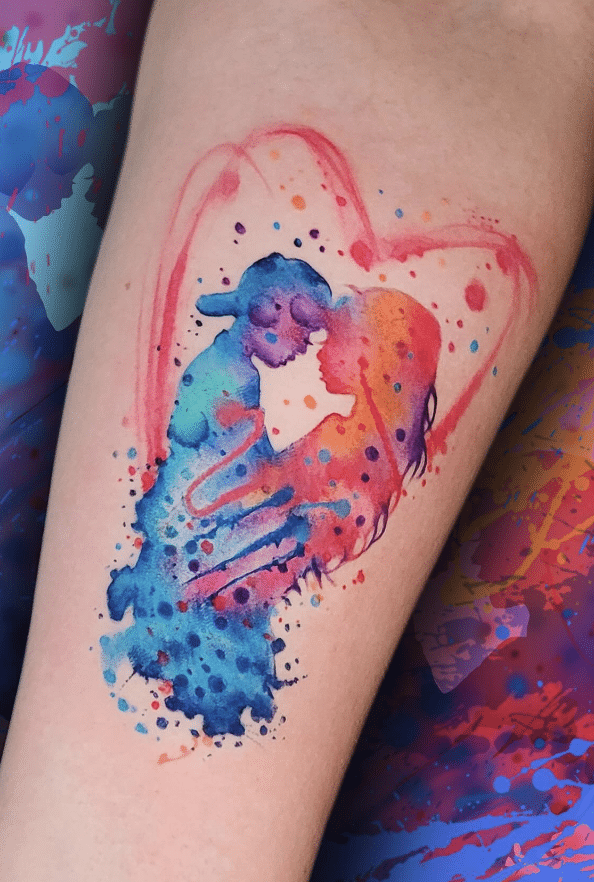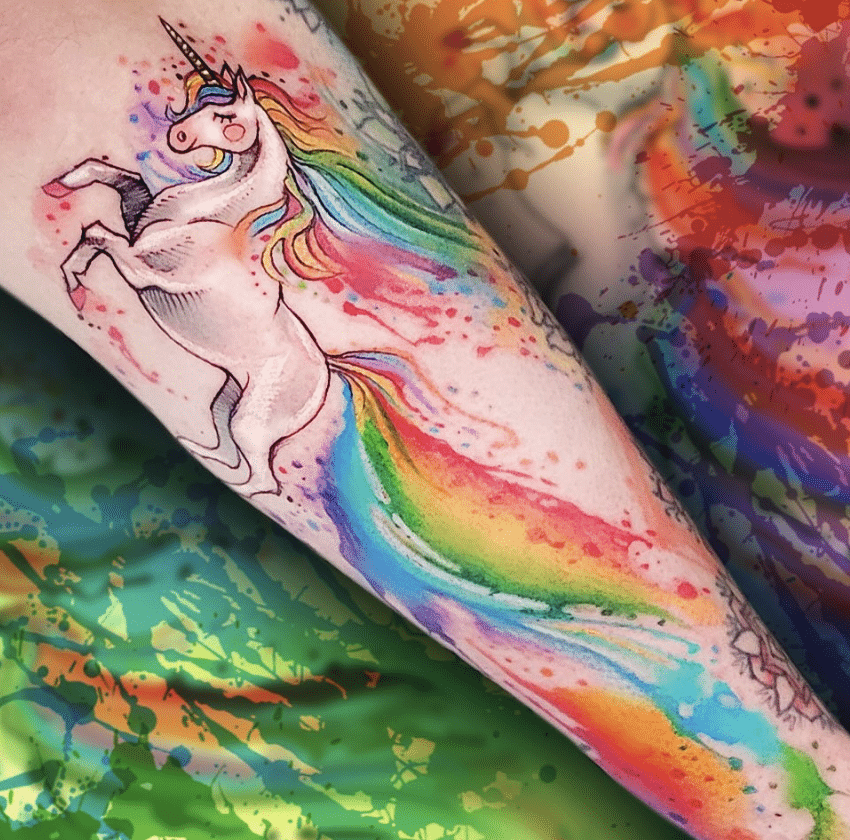As the tattooing art form evolved, new styles began to adapt with new technology, and inks begging to develop.
Watercolor tattooing is a recent trend in the tattoo world, that gained significance in the early 2000s.
Watercolor tattoos are a tattooing style inspired by watercolor painting. These tattoos mimic the aesthetic of watercolor paintings, which are characterized by their vibrant colors, fluid lines, and absence of bold outlines.
History Of Watercolor Paintings
Before we can discuss watercolor tattoos, we need to first discuss the history of watercolor paintings.
Watercolor painting is a painting method where paints are made of pigments suspended in a water-based solution.
Despite what you might think, watercolor painting is actually one of the most ancient forms of painting on the planet.
Watercolor painting dates back to cave paintings of paleolithic Europe and was also used for manuscript illustration since at least Egyptian times.
During the Renaissance, artists like Albrecht Dürer further refined watercolor techniques, creating detailed botanical studies and vivid landscapes.
This period marked a significant evolution in the use of watercolors, transitioning from illustrations to a recognized form of fine art.
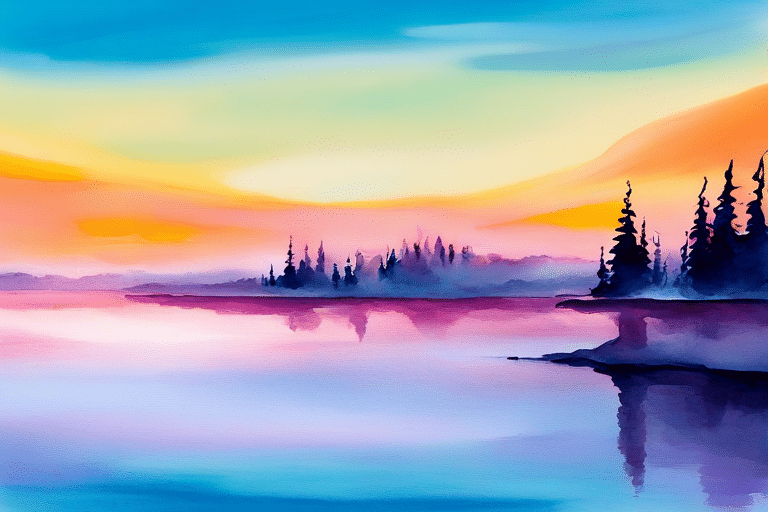
Photo credit: Daisie Blog
In the 18th and 19th centuries, watercolor painting saw a surge in popularity, particularly in England.
Artists such as J.M.W. Turner and John Constable harnessed the medium to capture the ephemeral qualities of light and nature, establishing watercolor as a major artistic medium.
The portability of watercolors also made them a favorite among explorers and scientists, who used them to document their findings and travels.
In contemporary times, watercolor painting has continued to evolve, with artists experimenting with abstract forms and innovative techniques.
Its versatility and the unique, luminous quality it imparts to artwork have kept it a beloved medium among artists worldwide.
Watercolor Tattoos
Watercolor Tattooing began gaining popularity in the early 21st century.
While no specific date can be traced for when watercolor tattoos first appeared, they became more widely recognized and popular in the tattoo community during the late 2000s and early 2010s.
The watercolor style was influenced by earlier forms of art and has evolved with the advancement of tattoo techniques and equipment that allow for more detailed and colorful expressions.
Watercolor Tattoos are characterized by their use of bright, vivid colors that blend seamlessly into one another, often without the solid black lines that are typical of traditional tattoo designs.
The colors can appear as if they are bleeding into each other, with varying intensities and transparency, mimicking the way watercolor paint behaves on paper.
In watercolor tattoos, the shading and coloring techniques can include splatters, drips, and strokes that show variation in lightness and darkness, adding depth and movement to the design.
These tattoos often incorporate a spectrum of colors in a single design, which can create a dreamy, ethereal look.
The watercolor style can be particularly effective for depicting natural themes like flowers, birds, or abstract designs.
Pioneers Of Watercolor Tattooing
While it is hard to determine where watercolor tattooing began, there are some notable artists who pioneered the the style etching their name in tattooing folklore.
Amanda Wachob is credited as being the first tattoo artist who popularized the watercolor tattoo, who while learning her craft was told ‘the correct way’ to do tattoo art.
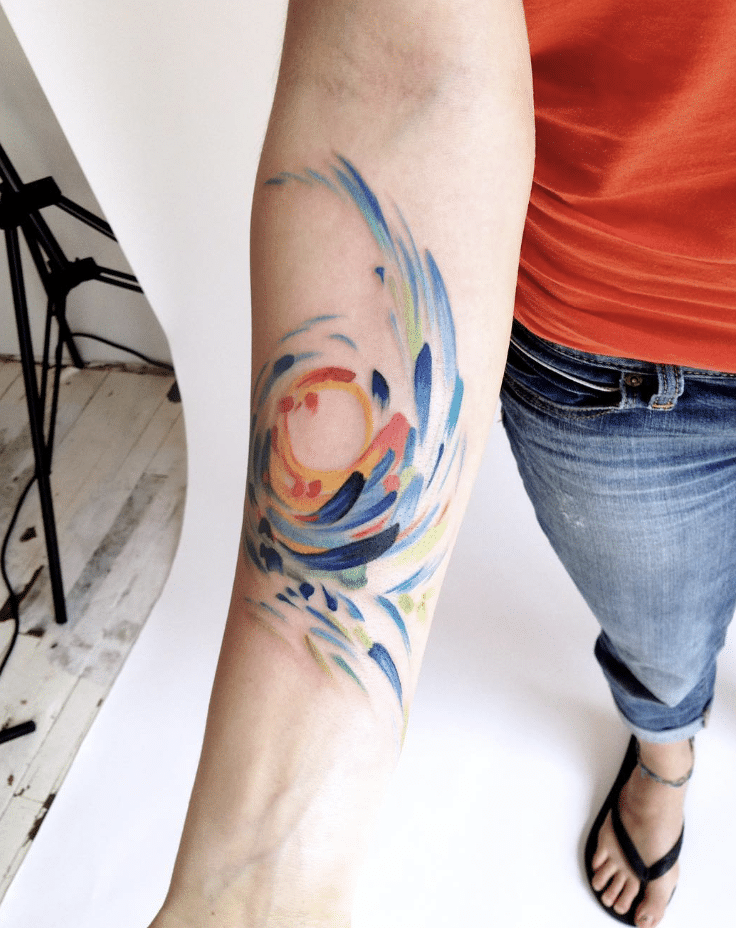
Photo credit: @AmandaWachob
This technique involved outlining everything first in black ink and then shading from dark to light.
However, out of respect for her client's wishes who wanted a faithful rendition of the art they presented, Amanda allowed them to leave out the black outlining as she felt it would ruin the piece.
Ondřej Konupčík is a Czech tattoo artist who was influential in popularizing the watercolor tattoo style in Europe and globally.
Ondřej, also known as Ondrash, is renowned for his distinctive style, which closely resembles watercolor painting, which has set him apart as a pioneer in the genre.
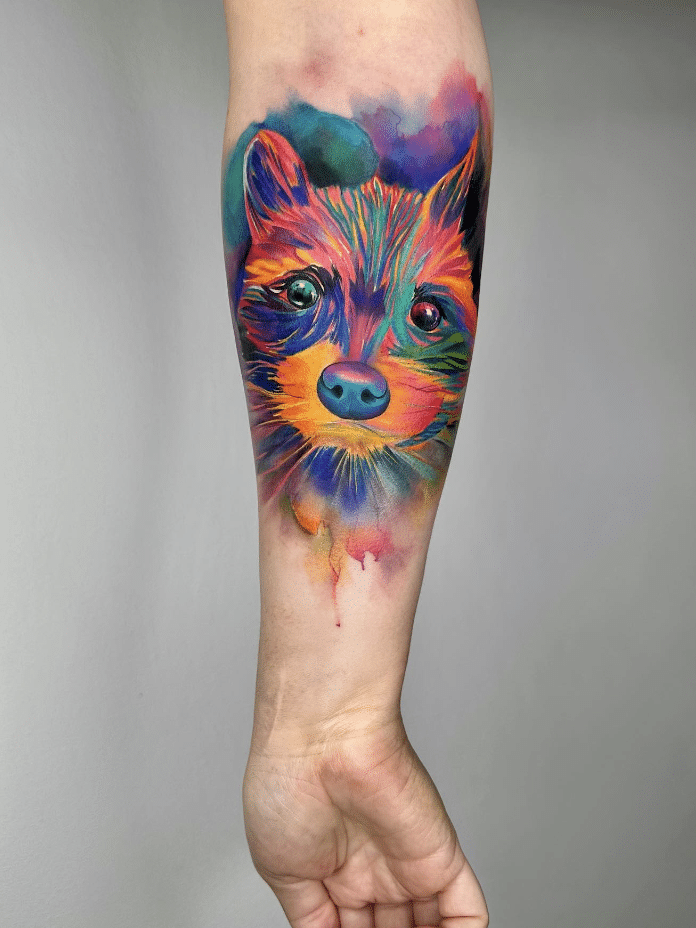
Photo credit: @Ondřej Konupčík
Ondrash's tattoos are recognizable by their soft edges, seamless color transitions, and the impressionistic way in which they capture subjects.
He frequently incorporates elements of nature, abstract forms, and occasionally whimsical designs into his tattoos, all imbued with a sense of motion and emotion.
Sasha Unisex is a tattoo artist who gained international fame from her amazing tattooing style, which combines elements of watercolor and geometric tattooing.
Sasha's tattoos are distinguished by their bold, graphic shapes and vibrant, flat colors that often resemble illustrations or digital art rather than traditional tattoos.
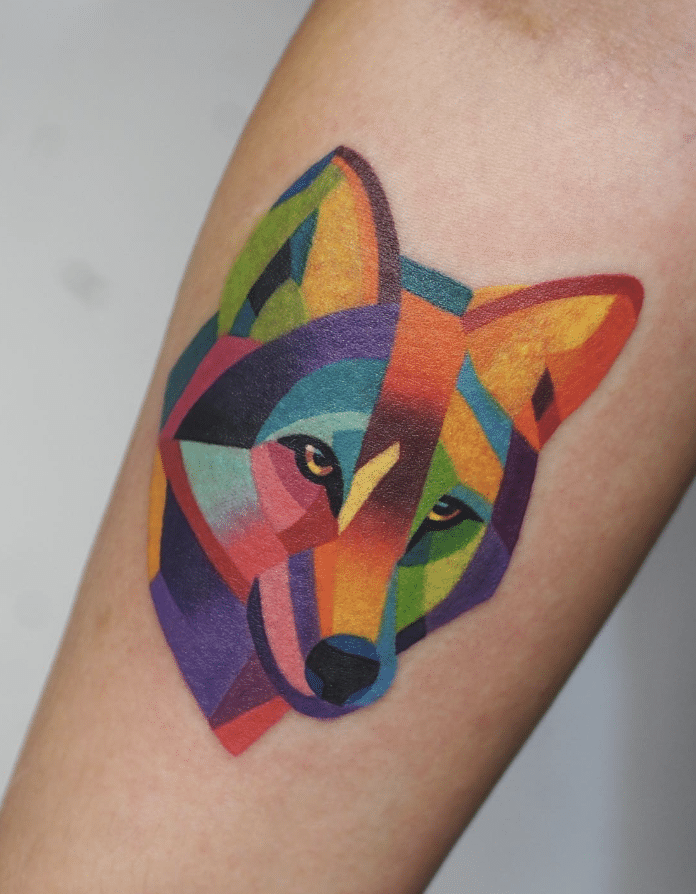
Photo credit: @Sasha Unisex
Sasha Unisex has also expanded her brand into various merchandise and has even worked with the likes of Nike, BMW, LEE, Estée Lauder, VANS and many others.
While watercolor tattoos have a reputation for fading quickly, there is much debate about whether they do or don’t fade fast.
Advancements in tattooing techniques and ink quality have improved their longevity.
Proper tattoo aftercare, including regular moisturizing and protecting the tattoo from the sun with sunscreen, can help maintain its vibrancy for longer.
Regular touch-ups can also revitalize the colors and keep the tattoo looking fresh.
Realistically there is a lot that can be a factor as to whether tattoos fade quickly or not.
Proper aftercare, tattoo artist skill, ink depth, ink quality, skin aging, and environmental factors all play a role in tattoo longevity regardless of style.
Amazing Watercolor Tattoo Artists
Conclusion
Watercolor tattoos blend vibrant hues and flowing forms to create breathtaking artwork that dances on the skin.
As we've seen, with thoughtful care and the right artist, these tattoos can maintain their splendor for years to come.
Whether it's your first tattoo or another addition to your collection, consider the watercolor style to add a splash of color and creativity to your personal canvas.
- Trash Polka Tattoo Style - June 25, 2024
- Anime Tattoo Style - June 17, 2024
- Geometric Tattoo Style - June 16, 2024

